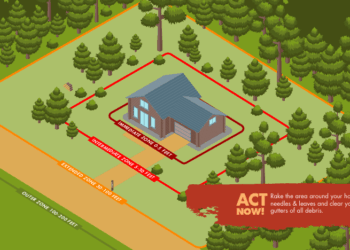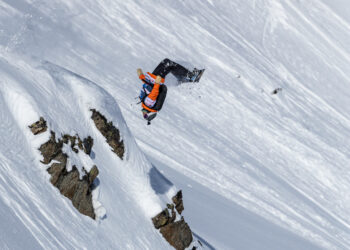By Pepper Trail Writers on the Range
Just like you, I live with the fear of wildfire. My southern Oregon town of Ashland nestles against the foothills of the Siskiyou Mountains, whose forests become tinder in our hot, dry summers.
One lightning strike or tossed cigarette on the wrong windy day, and Ashland could be destroyed as completely as the town of Paradise, California, in 2018.
This reality was brought home with terrifying force last September, when a wind-driven wildfire roared through the nearby towns of Talent and Phoenix, destroying over 2,500 residences in a matter of hours. Ashland was largely spared, but only because the wind pushed the fire in another direction.
Over the past several years, the city has implemented the ambitious “Ashland Forest Resiliency” project to reduce flammable fuels on thousands of acres of public lands. Tools in the Ashland Watershed include thinning and controlled burns. The project is considered to be a model ecological approach, not mere window-dressing to justify commercial timber harvest as is true of many “forest health” projects.
As a homeowner, I’ve supported the project, and as a conservation biologist, I’ve been impressed with how it’s been carried out.
Yet even as the city and its partners are diligently reducing forest fuels, more and more homes are being built in every nook and cranny of private land abutting the watershed. Many are McMansions commanding expansive views of the valley below. All these homes are at extreme risk of wildfire. As if the sense of crisis surrounding fuels reduction wasn’t enough, this adds another crisis, one we’ve made ourselves.
Recently, I took a favorite trail leading from the edge of edge of town into the watershed. I always look forward to walking through an avenue of small manzanita trees. In spring, their pink urn-like blossoms are mobbed by bumble bees and hummingbirds. In fall and winter, their berries — the “little apples” that give these shrubs their Spanish name — feed robins, thrushes and bears. Winter storms turn these groves into an enchanted labyrinth of green leaves, red bark and white snow.
Not this year. Not again in my lifetime. I found that this once intact and healthy wildlife habitat had been reduced to “defensible space.” The manzanitas had been harshly hacked back; those that had been spared stood isolated in a barren expanse of blood-red stumps. I counted the rings on one of the stumps, revealing that it had been at least 55 years old when we decided it was too dangerous to live.
The Forest Resiliency Project considered these manzanitas a threat because they were close to the city limits — and even closer to the big new homes being built outside the city limits.
They were sacrificed to increase our sense of security, and for no other reason. They were mostly healthy and important for wildlife. They shaded the soil and hosted mycorrhizal fungi integral to the nutrient cycles of the forest.
Yes, someday a wildfire would have burned here. But without our presence, that fire would not have been a tragedy, merely an episode in the long life of the land, and an opportunity for renewal. Manzanitas are well-adapted to fire; some species actually require fire for seed germination.
Oregonians take pride in being environmentally aware. Yet we accept the ecological destruction of the “fuels reduction” paradigm, rather than putting limits on our relentless expansion into the rural landscape.
Perhaps my town is becoming safer than it was before. But it’s questionable that any amount of “thinning” could protect Ashland from a wind-driven firestorm coming out of the watershed.
The fire that destroyed much of Talent and Phoenix, Oregon, like many of last summer’s devastating California wildfires, did not start on heavily forested public land.
Instead, it ignited and roared through a typical valley mosaic of creekside woodlands, orchards and residential neighborhoods. The hard truth is that for Ashland and many other towns around the West, avoiding catastrophic wildfire is as much a matter of luck as preparedness.
Still, we have to try, right? That means some degree of fuels reduction. But we must acknowledge the losses to the ecological integrity, the habitat value, and the beauty of this land that we love so much.
Pepper Trail is a contributor to Writers on the Range, writersontherange.org, an independent nonprofit dedicated to spurring lively conversation about the West. He is a conservation biologist and writer in Ashland, Oregon.















